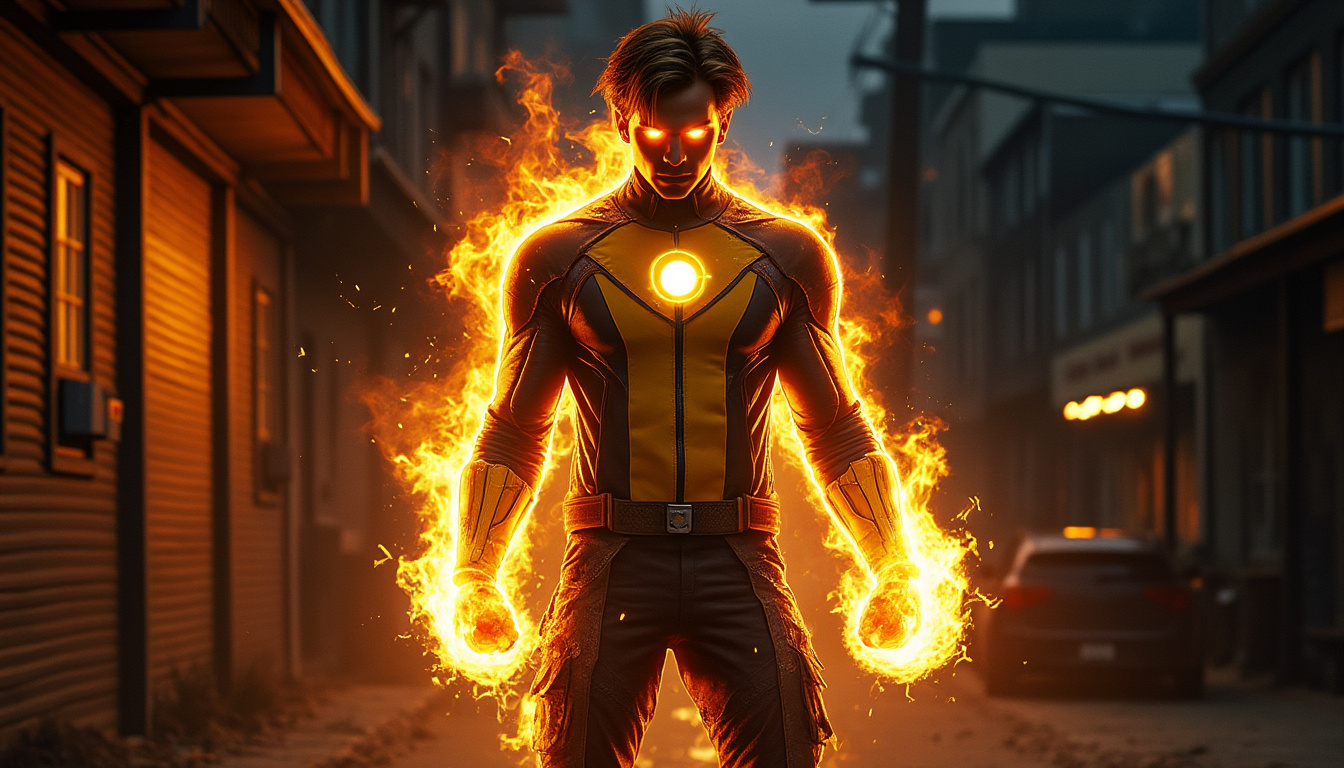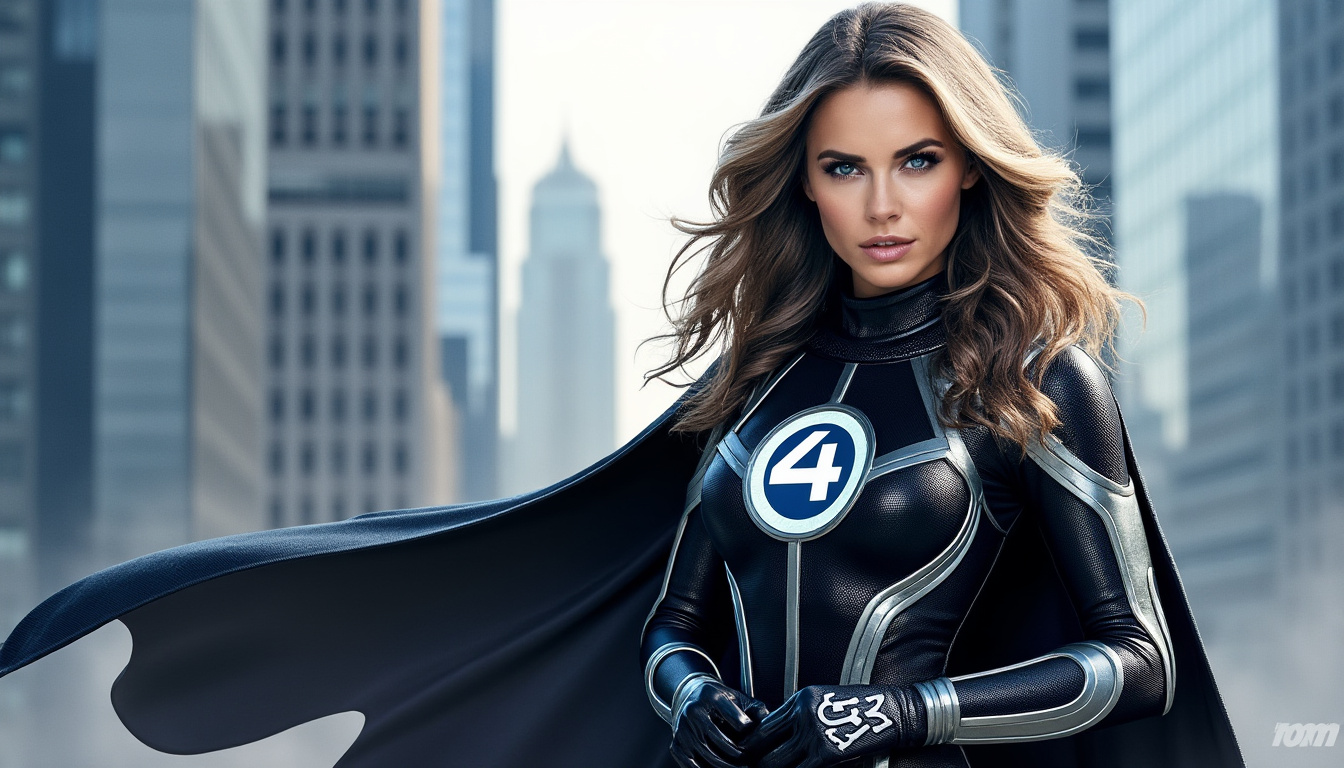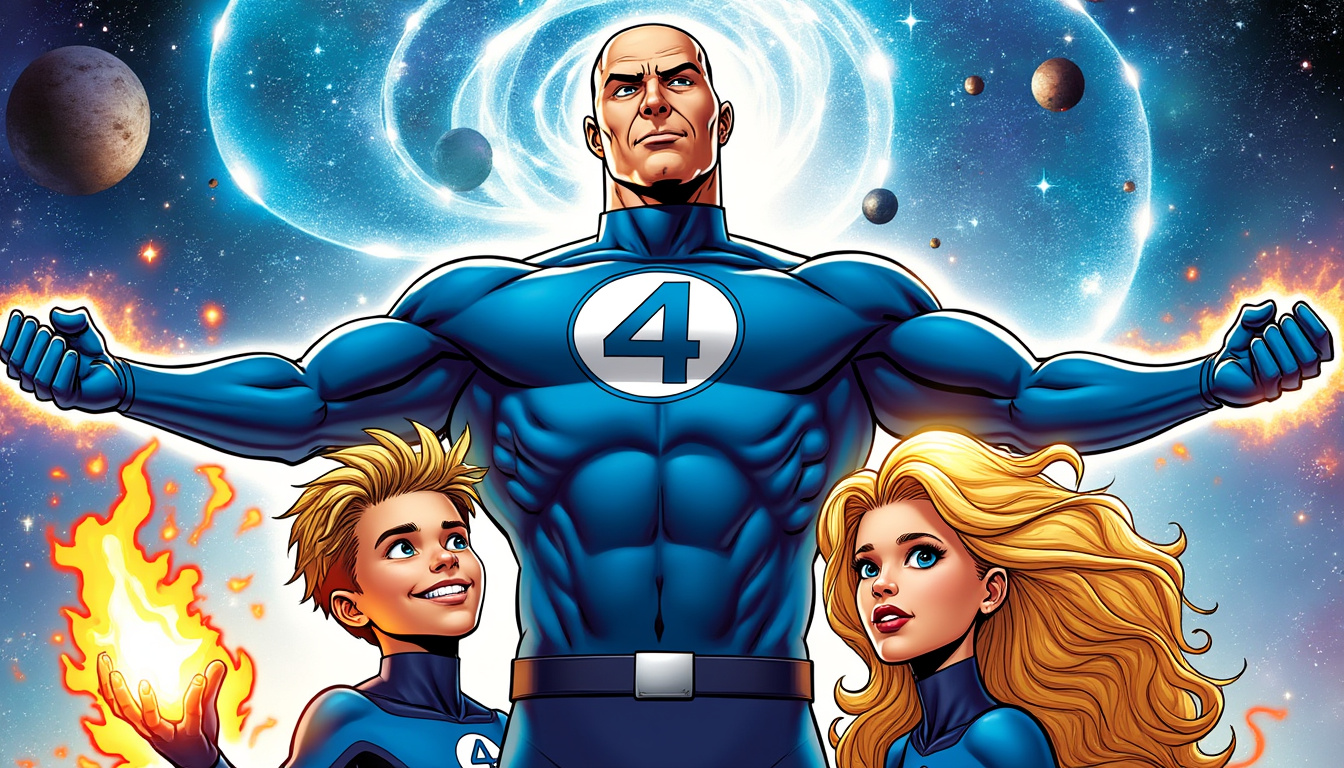The upcoming film Fantastic Four: First Steps has ignited excitement among fans, particularly with the intriguing portrayals of Johnny Storm, a.k.a. the Human Torch, and Sue Storm, a.k.a. the Invisible Woman. The cast, featuring the dynamic performances of Joseph Quinn and Vanessa Kirby, shared insights into how their characters will differ significantly from previous interpretations. Directed by Matt Shakman, known for his work on WandaVision, the film promises to explore new dynamics within Marvel’s first superhero family.
The Transformative Journey of Human Torch
The character of the Human Torch has undergone a fascinating transformation since his inception in the comics. Traditionally characterized by a carefree and womanizing persona, the new rendition by Joseph Quinn aims to bring a nuanced perspective to the role. Quinn elaborated during an interview with Entertainment Weekly, stating that his version of Johnny Storm reflects a more self-aware individual who grapples less with callousness towards others’ feelings. This shift sets the tone for a more relatable hero.

A New Take on Heroism
In the context of today’s superhero narratives, heroes are often expected to embody complex traits that resonate with modern audiences. The past portrayal of Johnny as a “devil-may-care” character felt somewhat outdated. The new film challenges this stereotype with Quinn’s interpretation, which is laced with humor and bravado, while also exploring deeper emotional themes.
Quinn highlighted the importance of portraying a character that people can connect with. By presenting Johnny as someone who craves attention but understands the implications of his behavior, he lends a fresh perspective to the archetype of a superhero. Here are a few essential elements that Quinn’s Johnny Storm will embody:
- Bravado: A confident persona that masks deeper insecurities.
- Self-awareness: A growing understanding of how his actions impact others.
- Comedy: Using humor as a tool to navigate serious moments.
This evolution reflects an understanding of contemporary storytelling, where flawed heroes can resonate more deeply with fans. As the audience watches Johnny navigate his adventures, they will be privy to a character who is not just defined by his powers but also by his emotional growth.
Comparative Analysis: Past vs. Present
A significant aspect of this transformation lies in contrasting Quinn’s portrayal with those of past actors, particularly Chris Evans, who played Human Torch in the earlier 20th Century Fox adaptations. The evolution represents not just character development but also cultural shifts in how we understand masculinity and heroism. The table below illustrates these differences:
| Aspect | Previous Portrayals | Joseph Quinn’s Adaptation |
|---|---|---|
| Personality | Carefree, womanizing | Confident, introspective |
| Emotional Depth | Superficial humor | Complex, emotionally aware |
| Relationships | Surface-level interactions | Meaningful connections with family |
Discovering the Invisible Woman
As the narrative unfolds, Vanessa Kirby steps into the role of Sue Storm, the Invisible Woman, with a commitment to redefine her character away from outdated stereotypes. Kirby’s Sue is more than just a powerful superhero; she is depicted as a matriarch, navigating the complexities of her family dynamics while also embracing her own ambitions and struggles.

The Complexity of Sue Storm’s Character
A notable shift in depiction emerges from Kirby’s desire to incorporate elements from Sue’s transformative arc in the comics, including her alter-ego Malice. This darker adaptation is not merely for shock value; it reflects a multifaceted character that embraces both vulnerability and strength.
Kirby expressed her intent to explore themes of motherhood and personal strength, emphasizing that Sue’s journey goes beyond surface-level heroics. The following points highlight the exciting depths Kirby aims to bring to Sue Storm:
- Motherhood: A portrayal of Sue as a nurturing yet powerful figure.
- Ambition: Balancing her superhero responsibilities with personal goals.
- Vulnerability: Embracing her emotions and complexities.
Director Matt Shakman supported Kirby’s vision, describing Sue as “the most emotionally intelligent person on the planet.” This nuanced approach to Sue Storm will resonate with audiences, showcasing that strength can coexist with vulnerability.
What Lies Ahead: A Vision for the Future
This evolution of the Invisible Woman resonates with broader themes in storytelling, where diverse representations are paramount. The focus is on creating characters who embody realism and relatability; it is important considering the current cultural climate. A subplot worth noting is Sue’s pregnancy in the film, adding another layer to her character and transforming traditional superhero narratives. Such depth allows for a greater exploration of motherhood within the superhero genre.
The changing landscape through the lens of Marvel films will focus on evolving character dynamics that challenge historical norms. Sue Storm’s complexity reveals the potential for moms in superhero narratives, affirming the idea that being heroic comes in many forms. The transition from conventional portrayals to multifaceted representations signifies a bright future for superhero films.
Dynamic Relationships in the Fantastic Four
The chemistry between Johnny and Sue Storm represents a cornerstone of the Fantastic Four narrative. Their sibling relationship is crafted with an authentic portrayal that reflects the ups and downs of familial bonds. Quinn and Kirby have emphasized the sibling dynamic, revealing how it impacts their character arcs and the overarching story.

Exploring the Sibling Bond
In interviews, both actors have highlighted the nuances in Johnny and Sue’s relationship. Unlike previous renditions that leaned toward stereotypical sibling rivalries, this version promises authenticity and emotional depth. Quinn pointed out that their interactions would lean on heartfelt moments rather than superficial conflicts. The table below outlines their relationship dynamics within this new narrative:
| Dynamic Aspect | Previous Adaptations | New Interpretation |
|---|---|---|
| Sibling Rivalry | Frequent bickering | Supportive yet realistic conflict |
| Emotional Connection | Surface-level interactions | Deep emotional understanding |
| Role of Humor | Comedic relief only | Humor as a bonding mechanism |
Introducing elements of realism in their relationship connects with audiences, allowing fans to relate on a personal level. It underscores the notion that superheroes, despite their extraordinary abilities, grapple with everyday family issues.
A Glimpse into the Narrative
The brothers and sisters bond will also feature prominently in the film’s larger narrative. Their experiences as superheroes emphasize teamwork but highlight the importance of trust and shared responsibilities. The film will capture this dynamic, enhancing both character growth and audience engagement.
Audiences have expressed eagerness to witness how these relationships will unfold, particularly regarding the delicate balance between heroism and family life. With insights into the characters’ emotional journeys, the film promises to challenge traditional superhero paradigms.
Comparative Insights from the Cast and Crew
The insights shared by Quinn and Kirby provide valuable context for understanding the creative decisions driving Fantastic Four: First Steps. Emphasizing depth and emotional resonance sets this iteration apart from previous adaptations. A critical aspect is the collaboration with director Matt Shakman, who brings a vision that encourages actors to explore their character’s multifaceted nature.
Director’s Influence on Character Development
Shakman’s direction reflects an understanding of the evolving superhero film landscape. His emphasis on emotional intelligence shapes the narrative, creating a space for characters to explore their vulnerabilities. The synergistic collaboration between Quinn, Kirby, and Shakman ensures that the portrayal of Human Torch and Invisible Woman resonates deeply with contemporary audiences.
This conscious decision to address and delve into complex themes demonstrates a clear departure from traditional storytelling. As the film integrates aspects of family, heroism, and personal growth, it builds anticipation for what this new rendition of the Fantastic Four will bring to the table.
- Emotional Depth: Addressing vulnerability
- Character Growth: Dynamic evolution throughout the film
- Realistic Interactions: Authentic sibling relationships
Future Implications for Marvel Cinematic Universe
As Marvel continues to innovate and reshape its storylines, the evolution of popular characters establishes a new template for future films. The transformative portrayals of Johnny Storm and Sue Storm signify a broader trend towards authenticity and relatability in superhero narratives. This shift not only captures audience interest but also fosters meaningful discussions about the representation of family and emotional intelligence in popular media.
Anticipation is high for the film’s release on July 25, 2025, as fans eagerly await this fresh take on beloved characters. The evolving portrayals resonate with contemporary audiences grappling with the complexities inherent in familial relationships. Through Quinn’s and Kirby’s performances, the Fantastic Four emerge as a modern symbol of both heroism and human experience, paving the way for the next generation of superhero narratives.


